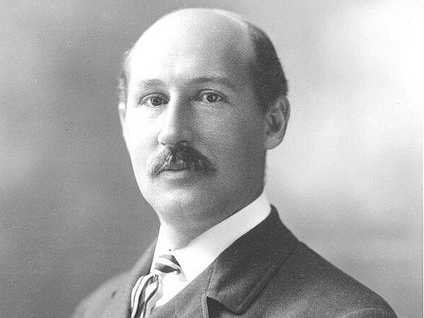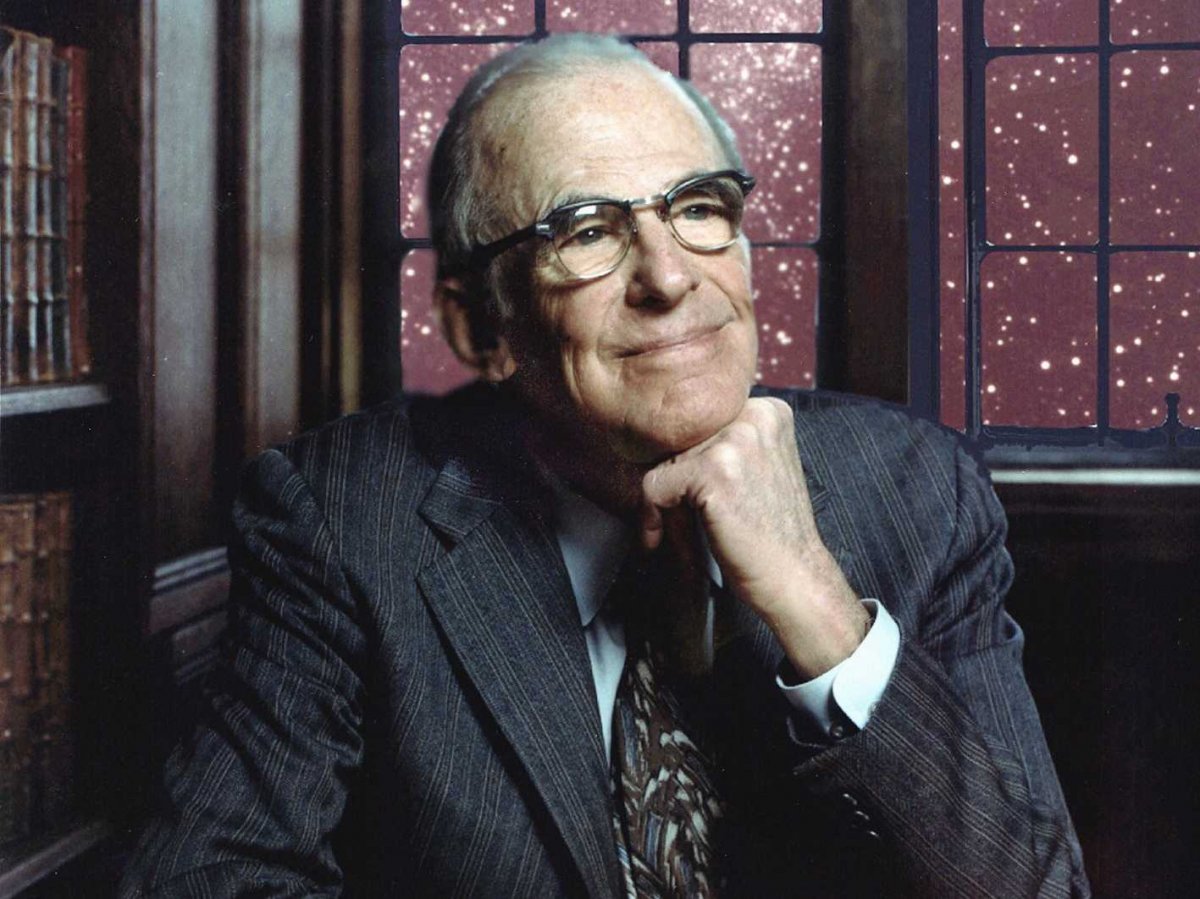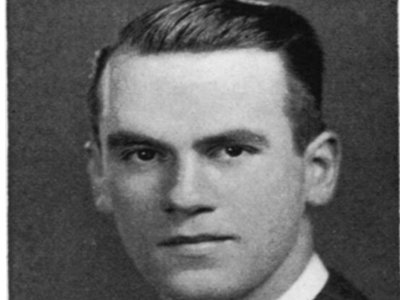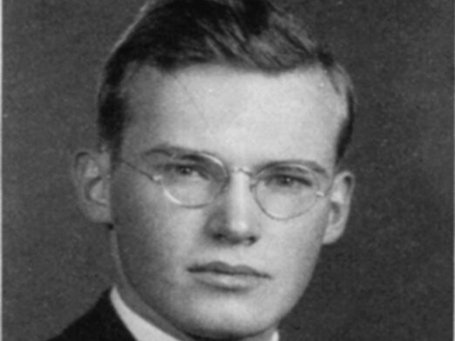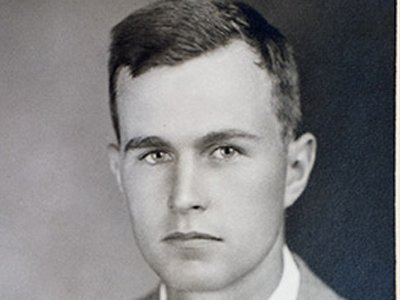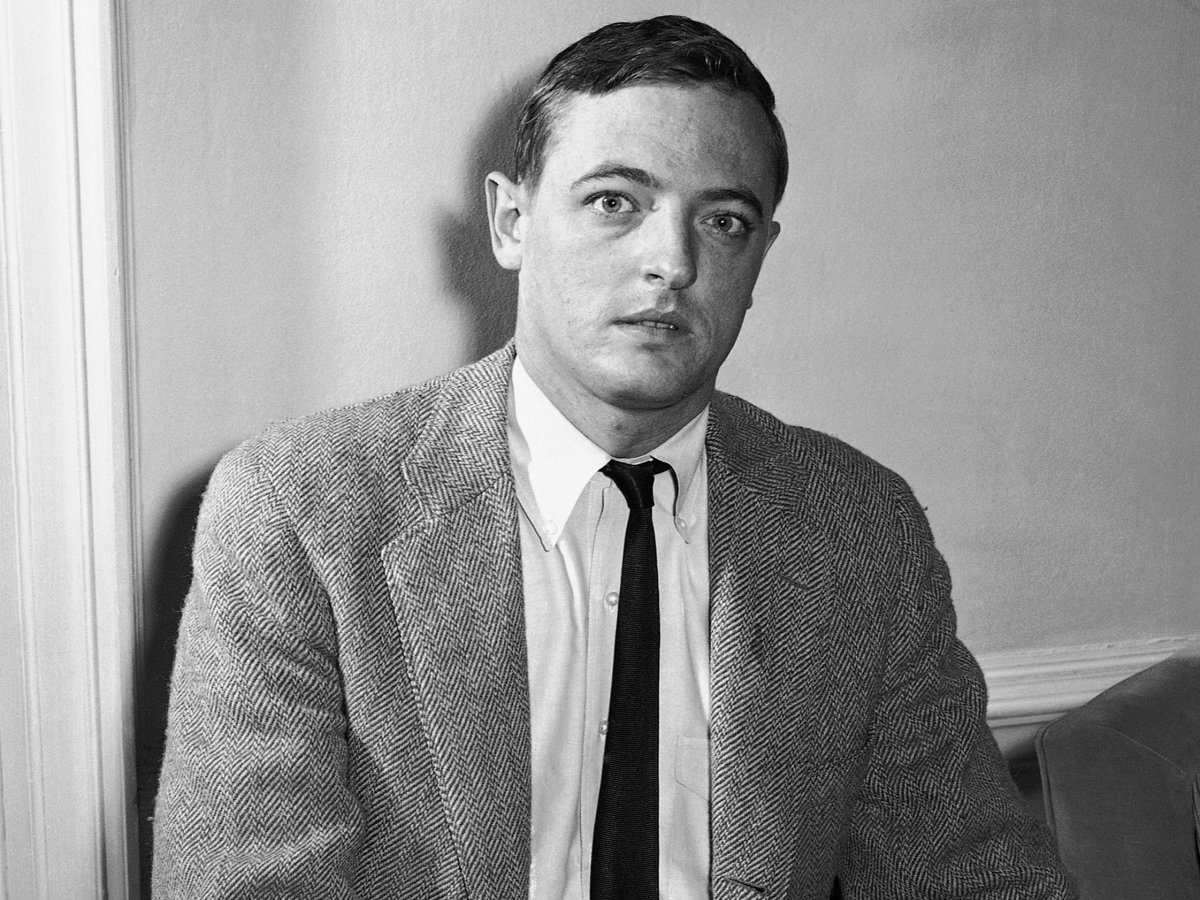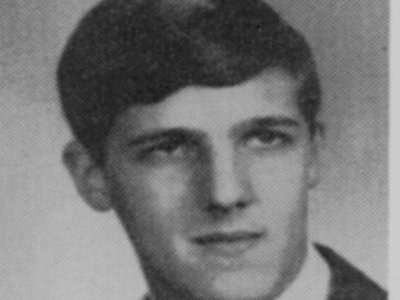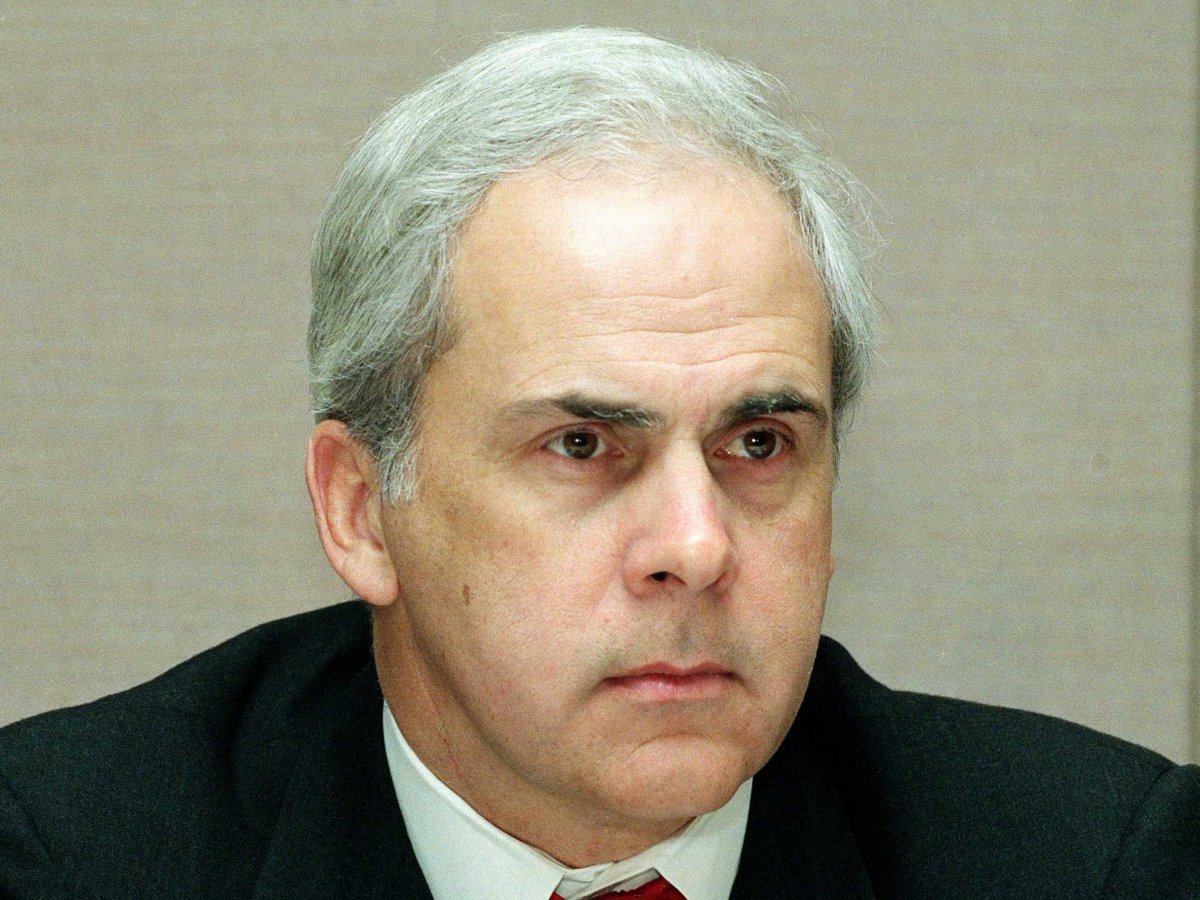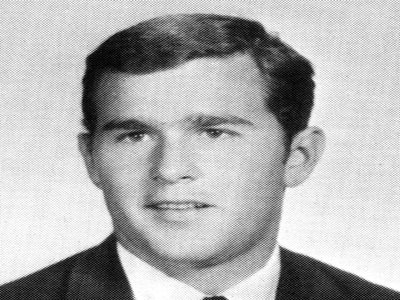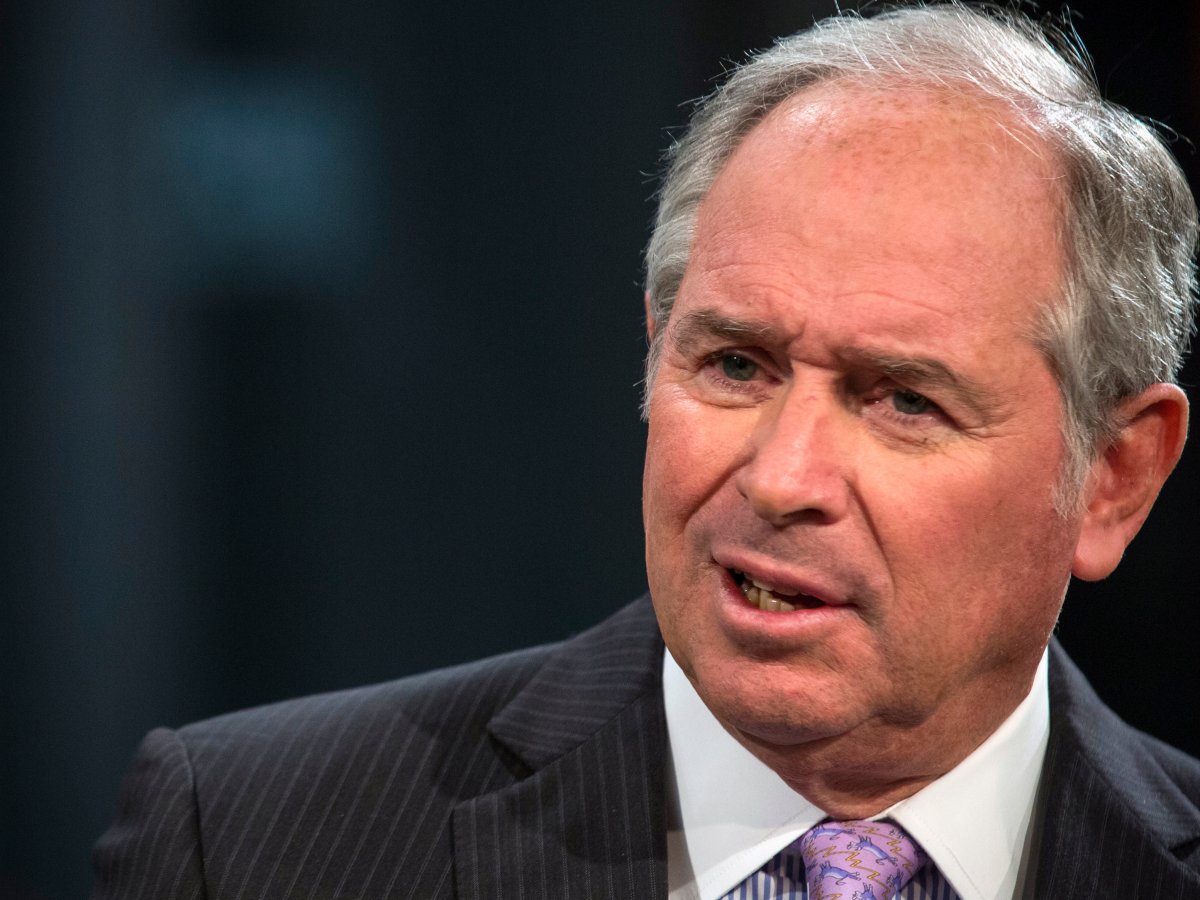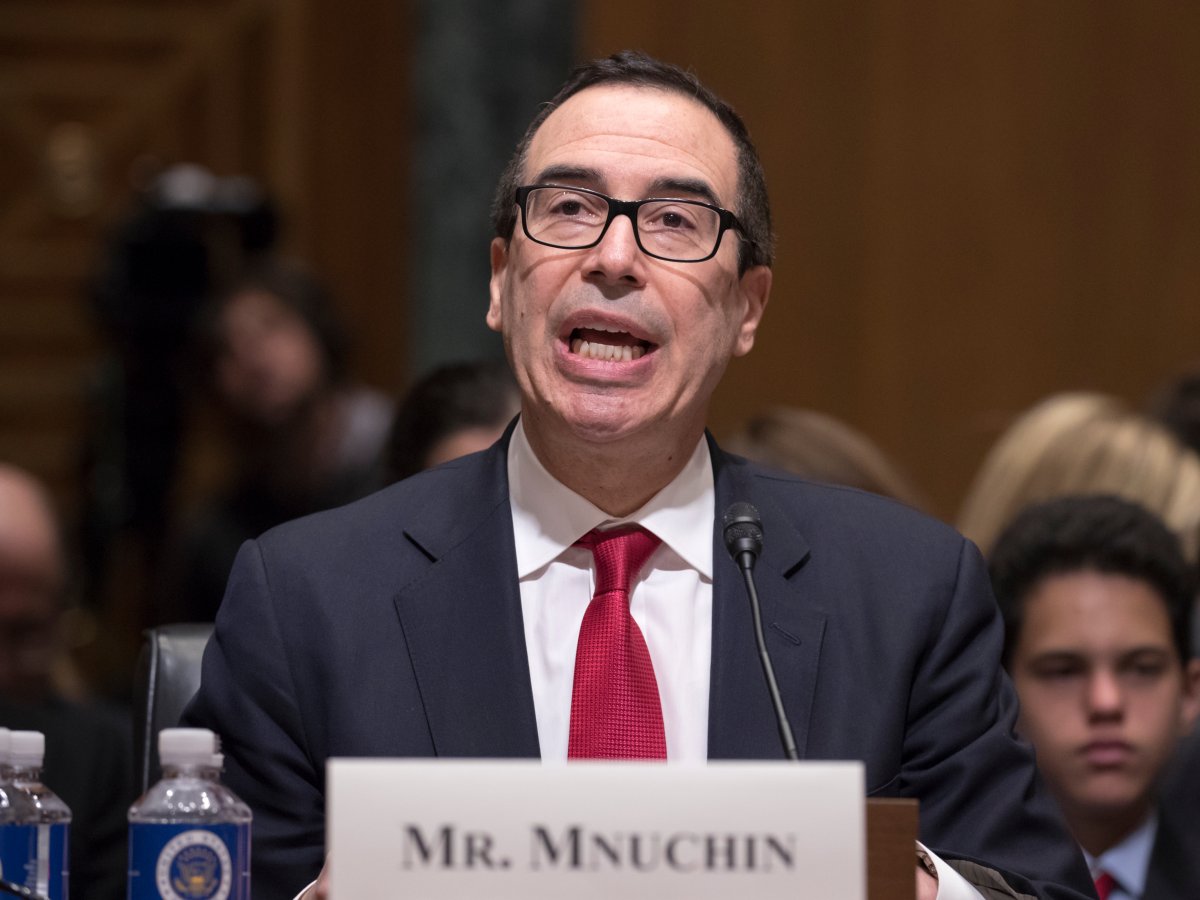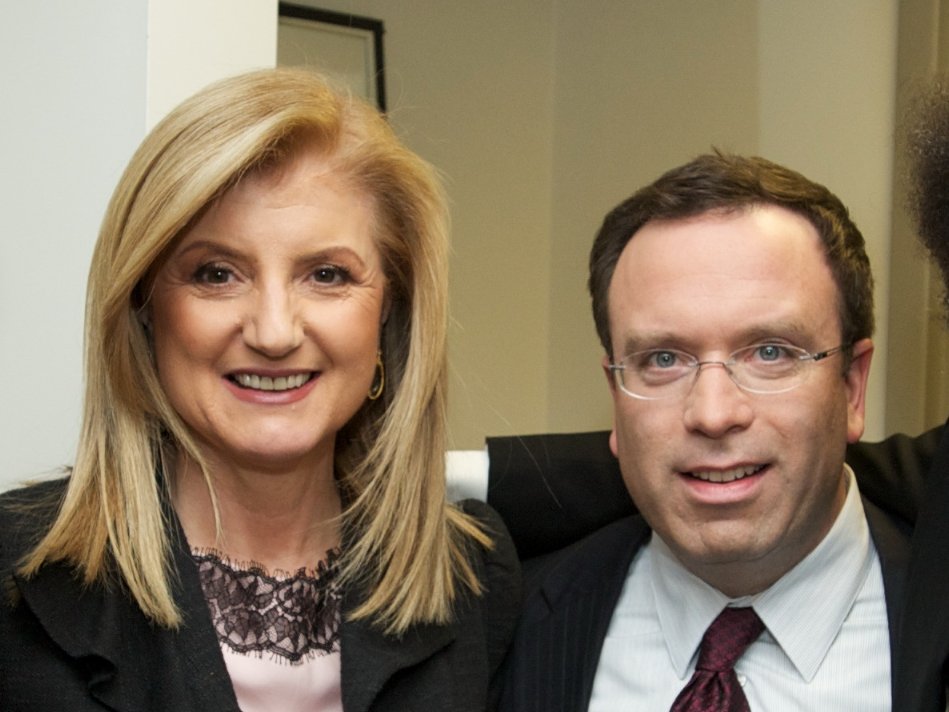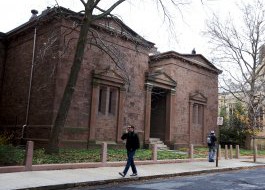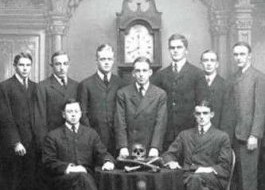 George W. Bush, the last in a long line of Bonesman in his family, gives a speech as president. Photo by Susan Watts-Pool/Getty ImagesIn 1832, Yale students — including future President William Howard Taft's father — founded one of America's most famous secret societies: Skull and Bones.
George W. Bush, the last in a long line of Bonesman in his family, gives a speech as president. Photo by Susan Watts-Pool/Getty ImagesIn 1832, Yale students — including future President William Howard Taft's father — founded one of America's most famous secret societies: Skull and Bones.
Each year, only 15 juniors are "tapped," or chosen, for lifetime membership in the club.
A windowless building on 64 High St., the "Tomb," serves as the club's headquarters. The roof is a landing pad for a private helicopter, according to Alexandra Robbins' book, "Secrets of the Tomb: Skull and Bones, the Ivy League, and the Hidden Paths of Power." For that perk and others, Bonesmen must swear total allegiance to the club.
New members reportedly divulge intimate personal details, including their full sexual histories, before they're inducted. They also agree to give part of their estates to the club. But, in return, they receive the promise of lifelong financial stability — so they won't feel tempted to sell the club's secrets, Robbins writes.
From among those business titans, politicians, and three US presidents, we picked the honor roll.
William Howard Taft — Class of 1878
William Howard Taft.Yale University Archives As the only person to serve as both president and Supreme Court chief justice, Taft earned his spot on our list. The 27th president went by "Old Bill" during his Yale days but later earned the nickname "Big Lub."
Taft also received the honorary title of "magog," meaning he had the most sexual experience while in the secret club, according to Alexandra Robbins.
Young Taft probably found entrance into the club rather easily. His father, former Attorney General Alphonso Taft, cofounded Skull and Bones as a Yale student in 1832.
Walter Camp — Class of 1880
Walter Camp.Wikimedia Commons Known as the "father of American football," Camp, with other classmates, developed the game from the Brits' version of rugby. He played in the first rugby game at Yale against Harvard in 1876.
Camp created many of modern football's rules, such as assessment of points and limiting the field-team to 11 men per side. But most importantly, he brought organization and esteem to the game, serving on the rules committee until his death.
Camp also established the National College Athletic Association, still operating today. During World War I, most of the armed forces conditioned using his tactics.
Lyman Spitzer — Class of 1935
Lyman Spitzer.Flickr/NASA APPEL A noted astrophysicist, Spitzer dreamed up the idea behind the Hubble Space Telescope — the first method to observe space uninhibited by the Earth's atmosphere. He also lobbied NASA and Congress for the funds and oversaw production of the actual machine.
After 44 years, NASA launched the Hubble into space. The Hubble remains there today, providing stunning images of the universe and making new discoveries.
NASA named the Spitzer Space Telescope in his honor.
Potter Stewart — Class of 1937
Potter Stewart.Yale University Archives The son of a Midwestern congressman, Stewart became the editor of The Yale Law Review during his time at Yale.
As a Supreme Court justice, Potter sat firmly in the middle of an ideological war on the bench.
Notably, he wrote a dissent in Griswold v. Connecticut in 1965, invalidating a state law that banned contraceptives. The opinion found that law was a violation of the right to marital privacy. His opinions in various cases also helped solidify Fourth Amendment protections.
Stewart also became famous for this quote about hardcore pornography: "I know it when I see it."
McGeorge Bundy — Class of 1940
McGeorge Bundy.Yale University Archives Before becoming one of JFK's "Wise Men," Bundy may have relied on his big brother to help him get into Skull and Bones. William Bundy, who graduated a class earlier, went on to serve as State Department liaison official, notably during the Bay of Pigs invasion.
"Odin," as fellow Bonesmen called him, however, left his own mark on the world, though potentially not all positive.
One of Kennedy's advisers, Bundy heavily impacted the evolution of the Vietnam War. After his death, fellow officials used his notes to express regret about many policies enacted during the era.
George Herbert Walker Bush — Class of 1948
George Herbert Walker Bush.Skull and Bones Yearbook, 1948 Before Bush became the second Bonesman to occupy the Oval Office, he was also a pilot in WWII and served as ambassador to Communist China, director of the CIA, and of course, vice president to Ronald Reagan.
As president during the end of the Cold War, Bush supported space exploration. The American people have also criticized and exalted his involvement in the Gulf War, notably Operation Desert Storm.
William F. Buckley Jr. — Class of 1950
William F. Buckley Jr.AP Photo/Arnold Walter Known for his outspokenness and transatlantic accent, Buckley symbolized the most conservative brand of politics.
At Yale, he acted as chairman of the Yale Daily News and was a member of the debate team. Buckley later founded the political magazine the National Review, still in production today. He also wrote many spy novels throughout his life.
John F. Kerry — Class of 1966
John F. Kerry.Yale University Archives The former secretary of state and senator from Massachusetts, Kerry spent a childhood abroad with his diplomat father before attending Yale and gaining membership into Skull and Bones.
While at Yale, he served as president of the Yale Political Union, although his candidacy in the 2004 presidential race didn't end quite as well.
Kerry's period as an on-campus Bonesman just missed — by two years — intersecting with the man he would come to challenge in that messy political head-to-head.
Frederick Wallace Smith — Class of 1966
Frederick Wallace Smith.AP Photo Smith, an often-forgotten Bonesman, founded FedEx, the first and largest express delivery company in the world. He serves as president, chairman, and CEO of the multibillion-dollar company.
He earned his degree in economics, and many speculated he might land a role in John McCain's potential presidential cabinet or even be his VP pick during the 2008 presidential election.
Defying ideological borders, Smith was close friends with both Bush and Kerry during his days at Yale.
George W. Bush — Class of 1968
George W. Bush.Media Library - Yale Whiffenpoofs "W's" family name had become synonymous with Skull and Bones by the time he arrived on Yale's campus. There were rumors that Bush almost missed getting tapped by the group, but he ended up becoming the third Bonesman to become president.
We don't know much about Bush's time in the club. "My senior year I joined Skull and Bones, a secret society, so secret I can't say anything more," he wrote in his 1999 autobiography, "A Charge to Keep." Bush, however, carries a certain disdain for Yale's brand of East Coast elitism, as The Atlantic pointed out.
Stephen A. Schwarzman — Class of 1969
Stephen A. Schwarzman.Brendan McDermid/Reuters The club tapped Schwarzman only a year behind George W. Bush. He came to prominence under the future president's administration when his hedge fund, The Blackstone Group, went public in 2007. Forbes estimates his personal fortune at around $11.9 billion as of March 2017.
In 2015, he donated $150 million to Yale to form The Schwarzman Center on campus.
Schwarzman was recently tapped by President Donald Trump to chair his Strategic and Policy Forum, which consists of 17 high-powered executives.
Steven Mnuchin — Class of 1985
Donald Trump's Department of the Treasury nominee Steve Mnuchin.AP Photo/J. Scott Applewhite Mnuchin begins a newer generation of Bonesmen on the list. The current US Secretary of Treasury got his bachelor's degree at Yale before starting work at Goldman Sachs. Mnuchin stayed with the bank for 17 years, and became its chief information officer in 1999.
After moving on from Goldman, he started his own hedge fund. Reports have estimated his net worth anywhere from $300 to $500 million.
Dana Milbank — Class of 1990
Dana Milbank, right, with Arianna Huffington.AP Photo/Earl Gibson III Milbank is a journalist who covers politics.
He writes a column for The Washington Post, and he wrote "Tears of a Clown: Glenn Beck and the Teabagging of America," among other books.
Christina Sterbenz contributed to a previous version of this story



